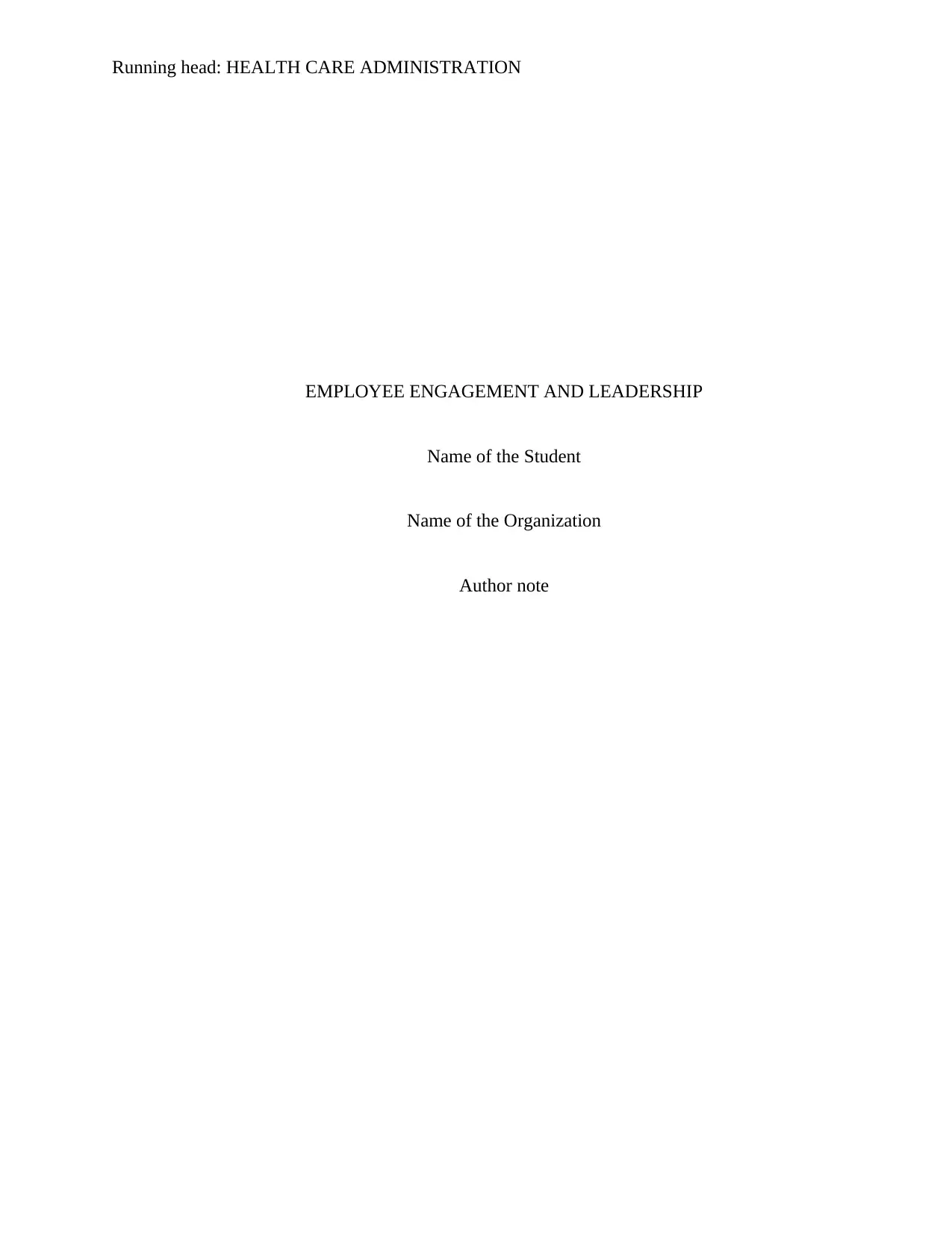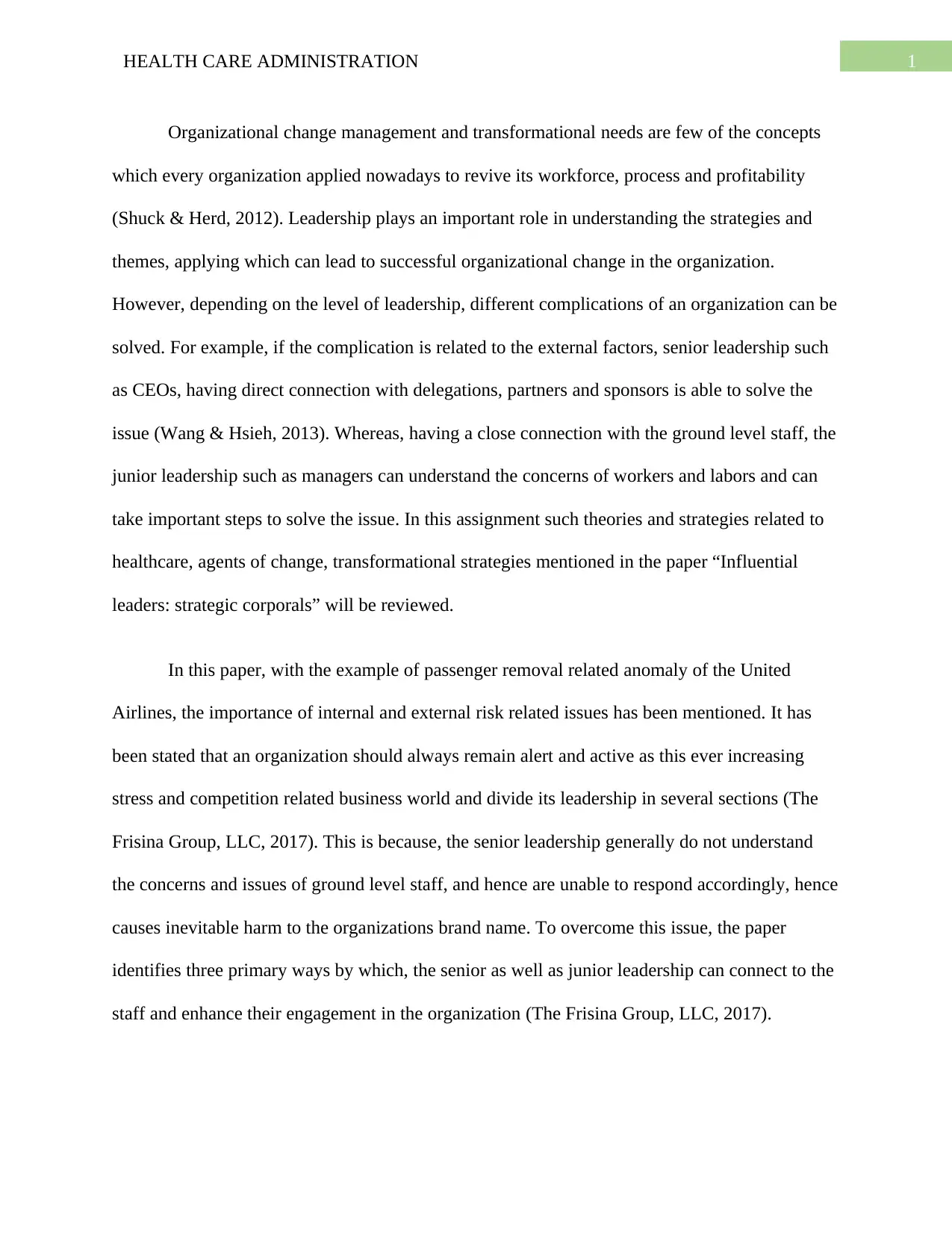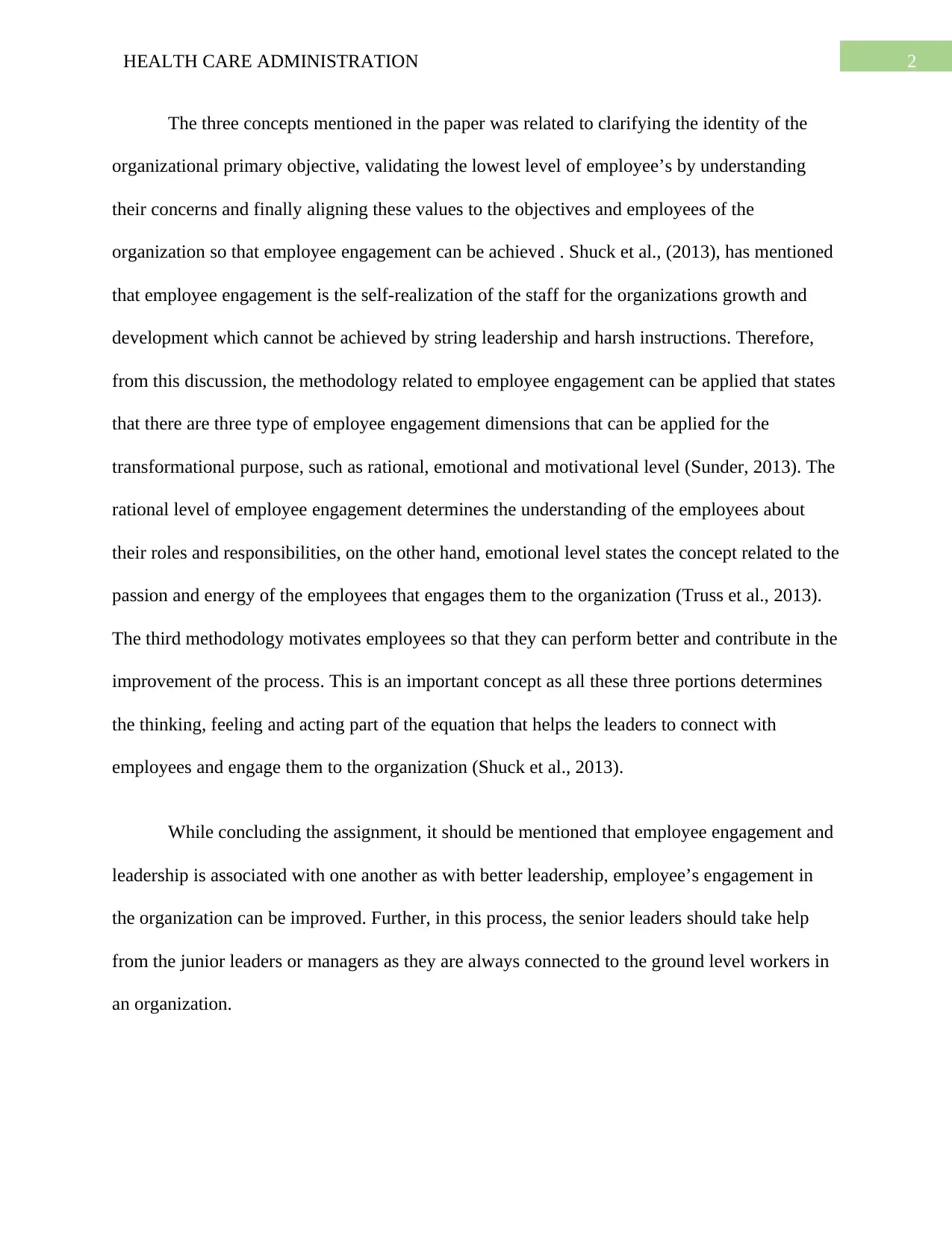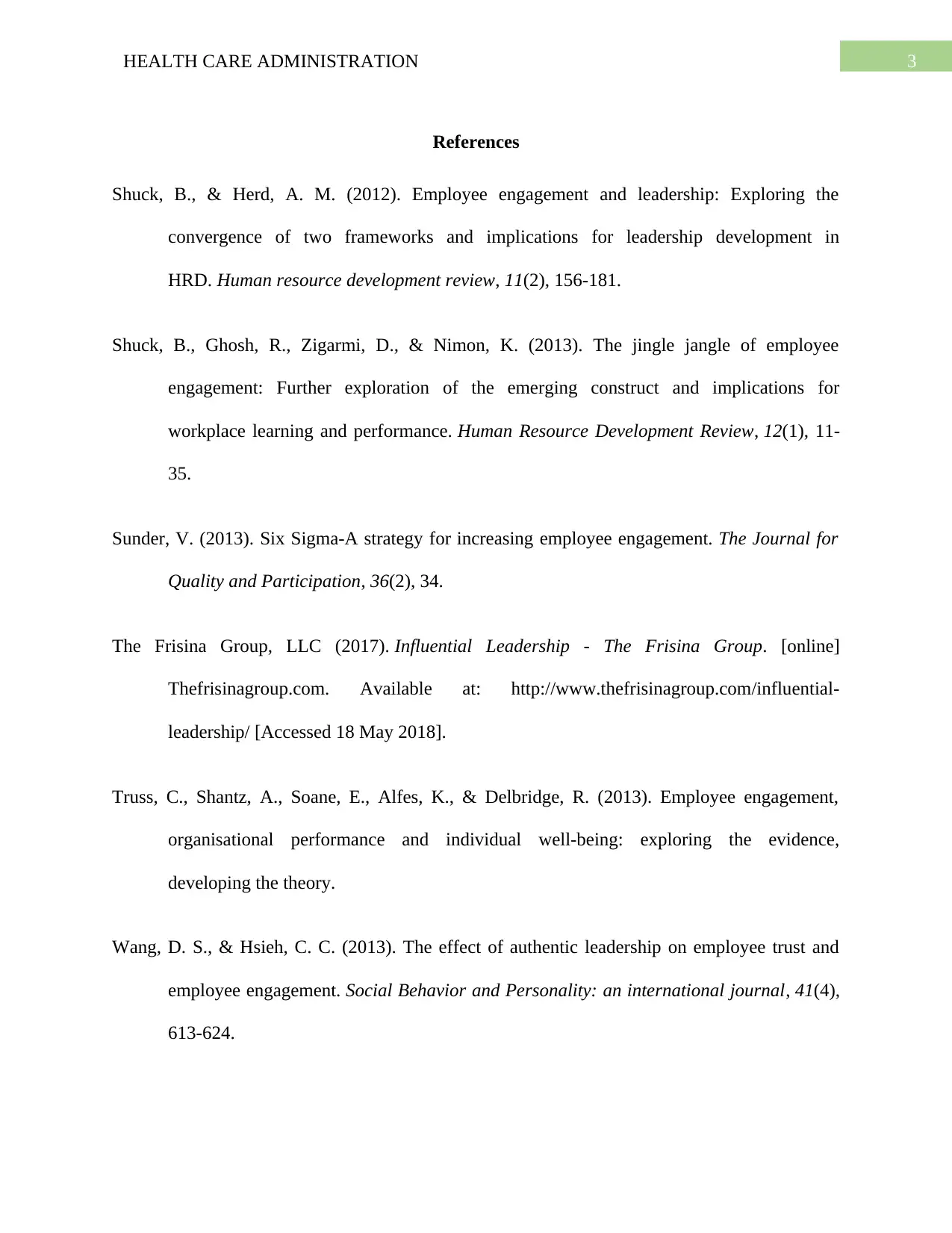Health Care Administration - Employee Engagement & Leadership Analysis
VerifiedAdded on 2021/06/17
|4
|926
|25
Report
AI Summary
This report delves into the critical relationship between employee engagement and leadership within the healthcare administration field. It examines the importance of organizational change management and transformational leadership, emphasizing how effective leadership can drive positive outcomes. The report references the paper "Influential leaders: strategic corporals" to highlight the significance of addressing both internal and external risks, using the United Airlines example to illustrate the impact of leadership failures. It identifies three key strategies for connecting senior and junior leadership with staff to enhance engagement: clarifying organizational objectives, validating employee concerns, and aligning values. Furthermore, the report discusses the three dimensions of employee engagement—rational, emotional, and motivational—and how these elements contribute to transformational purposes. The conclusion stresses the interdependence of employee engagement and leadership, highlighting the crucial role of junior leaders in fostering connections with ground-level staff. The assignment concludes by reinforcing the idea that improving leadership directly enhances employee engagement within the healthcare setting.
1 out of 4











![[object Object]](/_next/static/media/star-bottom.7253800d.svg)